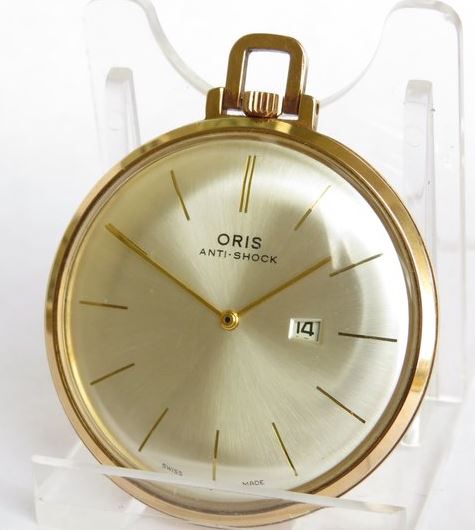Oris was founded by Paul Cattin and Georges Christian in the Swiss town of Hölstein in 1904. They bought the recently closed Lohner & Co. watch factory and started manufacturing watches. The new watch company was named Oris, after a nearby stream. It must have been a fairly insignificant stream because I can’t find it on Google Maps.
The business was immediately successful and they opened an assembly plant and a second factory in the nearby town of Holderbank. By 1911, Oris has become the largest employer in Hölstein, with over 300 workers. To entice more watchmakers, it built houses and apartments for its staff. Oris’s success continued to such an extent that by 1929 it had factories in Hölstein (1904), Holderbank (1906), Como (1908), Courgenay (1916), Herbetswil (1925) and Ziefen (1925).
Affordable watches
From the very beginning, Oris had focused on producing affordable watches for the average man on the street. Their range of watches used Roskopf-style movements with pin-pallet escapements. The Roskopf escapement was commonly used as it had many of the advantages of the lever escapement but was easier and cheaper to manufacture. The pallets in a traditional lever escapement have two angled faces, the locking face and the impulse face, which engage the escape wheel teeth. They must be adjusted to precisely correct angles for the escapement to function.
In the pin pallet escapement, these faces are designed into the shape of the escape wheel teeth instead, eliminating the need for costly adjustments. However, the metal pins used instead of pallets have much higher friction than jewelled pallets. This combined with the looser manufacturing tolerances made pin pallet timepieces less accurate. The metal pins also wear more quickly. Pin pallet timepieces are usually too cheap to justify repairing. They are usually thrown away when they break down or wear out. It must be said, that Oris was one of the few manufacturers of Roskopf escapements that did jewel their movements. Oris actually managed to achieve Chronometer grade certification for their 15-jewel calibre 451 pin pallet movement, which was a significant achievement.
Watch Statute
In 1934, the Swiss government passed a law named the “Watch Statute”. It prevented watchmakers from introducing new technology without authorization. This prevented Oris from adopting the lever escapement that was in use by its competitors. It was forced to continue using the Roskopf pin-lever escapement. This prevented them from upgrading their line of watches. In 1956 Oris hired a young lawyer, Rolf Portmann, in order to do something about the situation. Finally, in 1966, Portmann managed to obtain the reversal of the Watch Statute. In 1968, Oris unveiled the Calibre 652, using the superior lever escapement.
Oris, in 1970, became part of Allgemeine Schweizer Uhrenindustrie AG (ASUAG), the predecessor of the Swatch Group. In the 1980s, as a result of the Quartz Crisis, Oris was on the verge of closure. In 1982, as a result of a management buyout, it became independent again, trading as Oris SA. Its new focus was to produce mechanical timepieces in the mid-price segment of the luxury watch market.
I see plenty of good-quality vintage Oris watches for sale from my preferred suppliers. However, I can’t recall seeing an antique Oris watch. I suspect this is due to the disposable nature of watches made with Roskopf movements.
Related content
Oris SA at Wikipedia.
